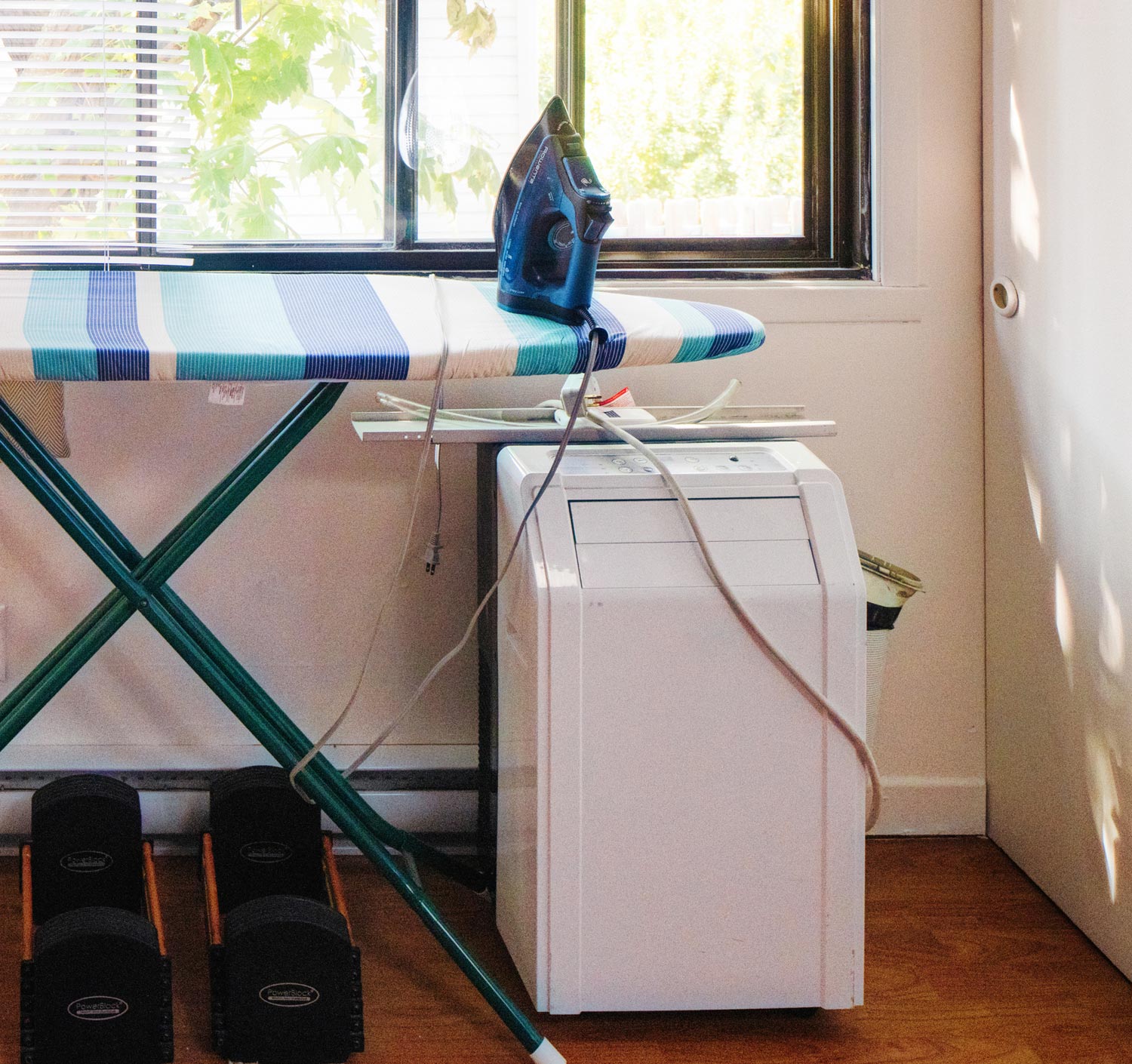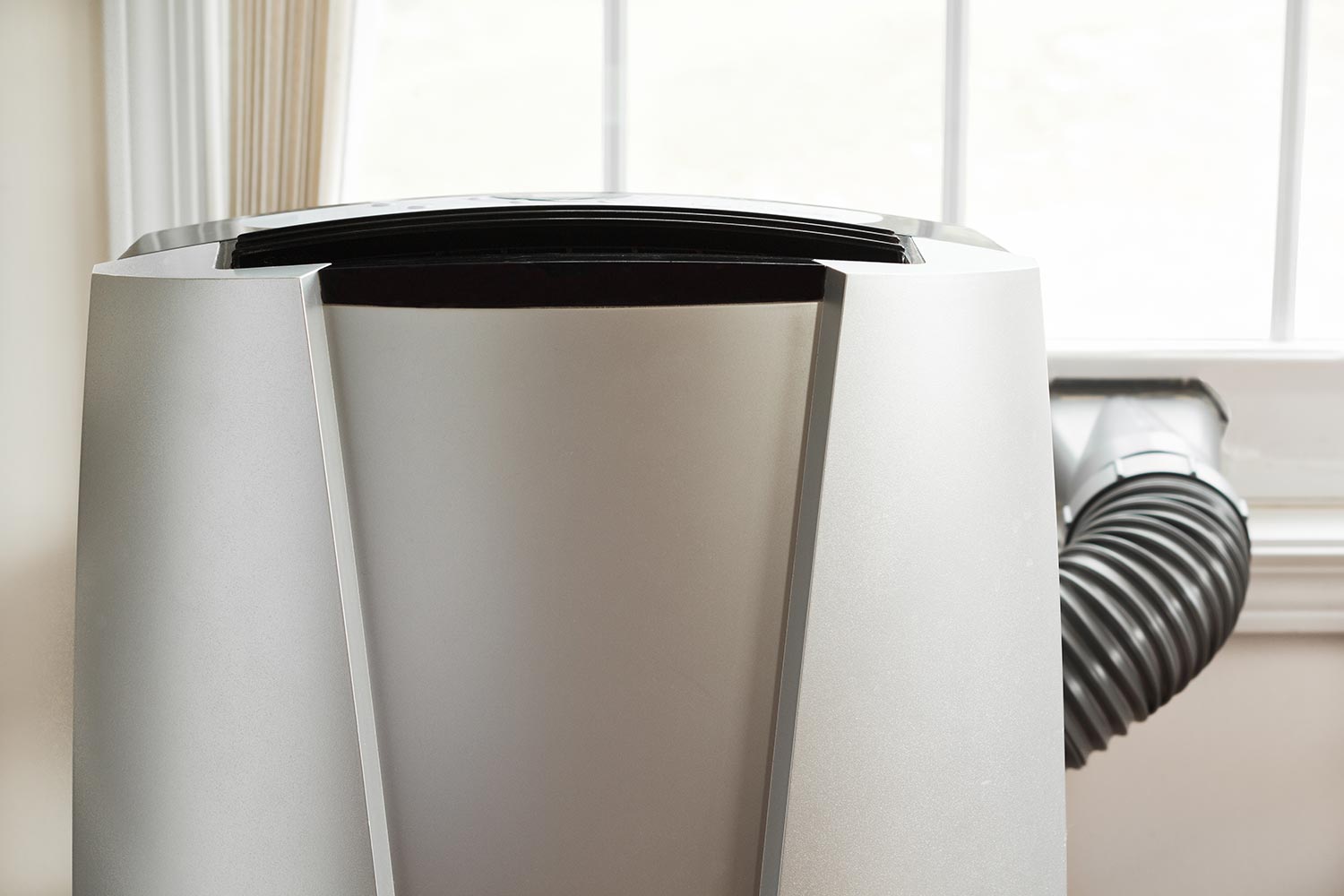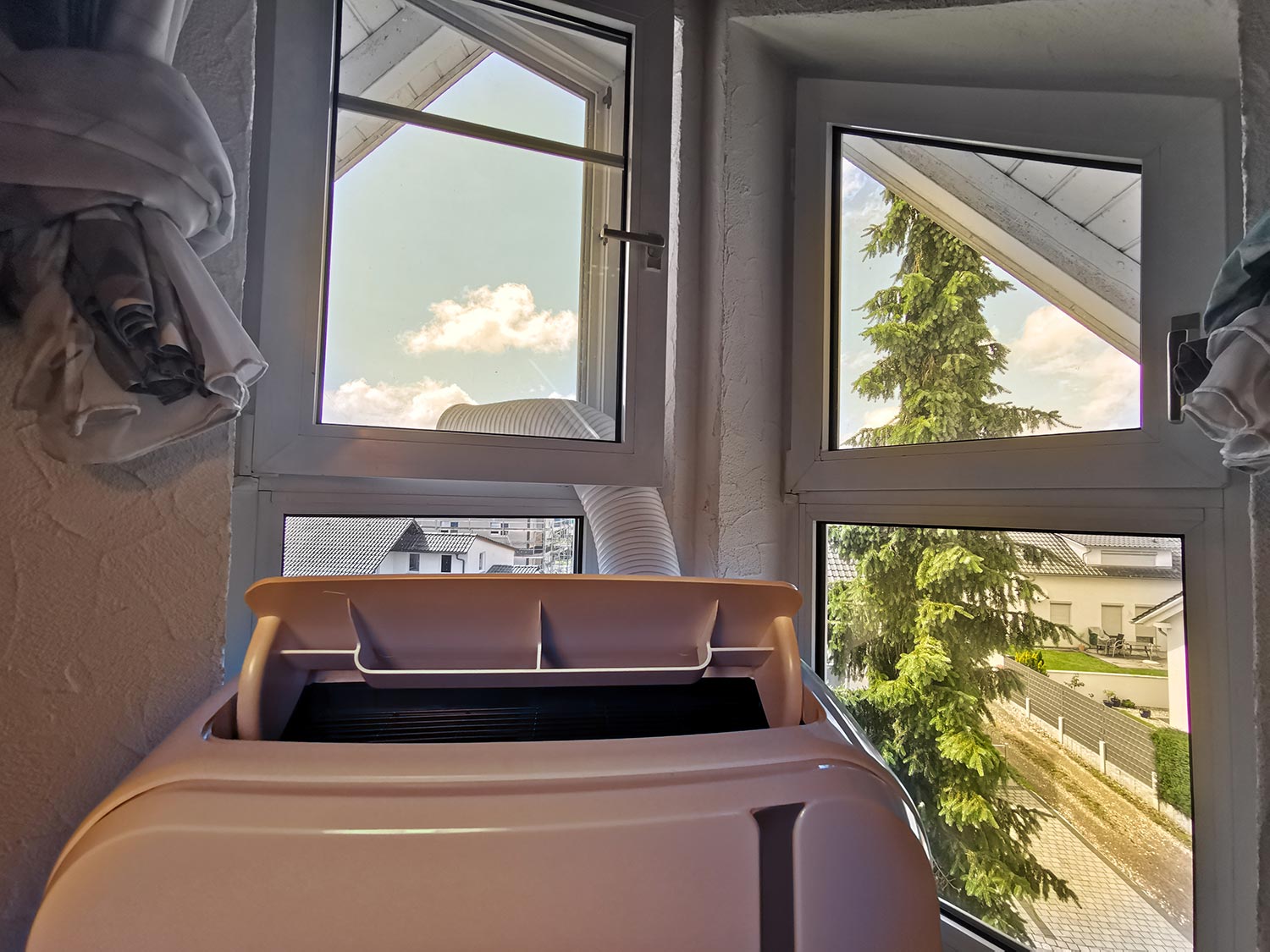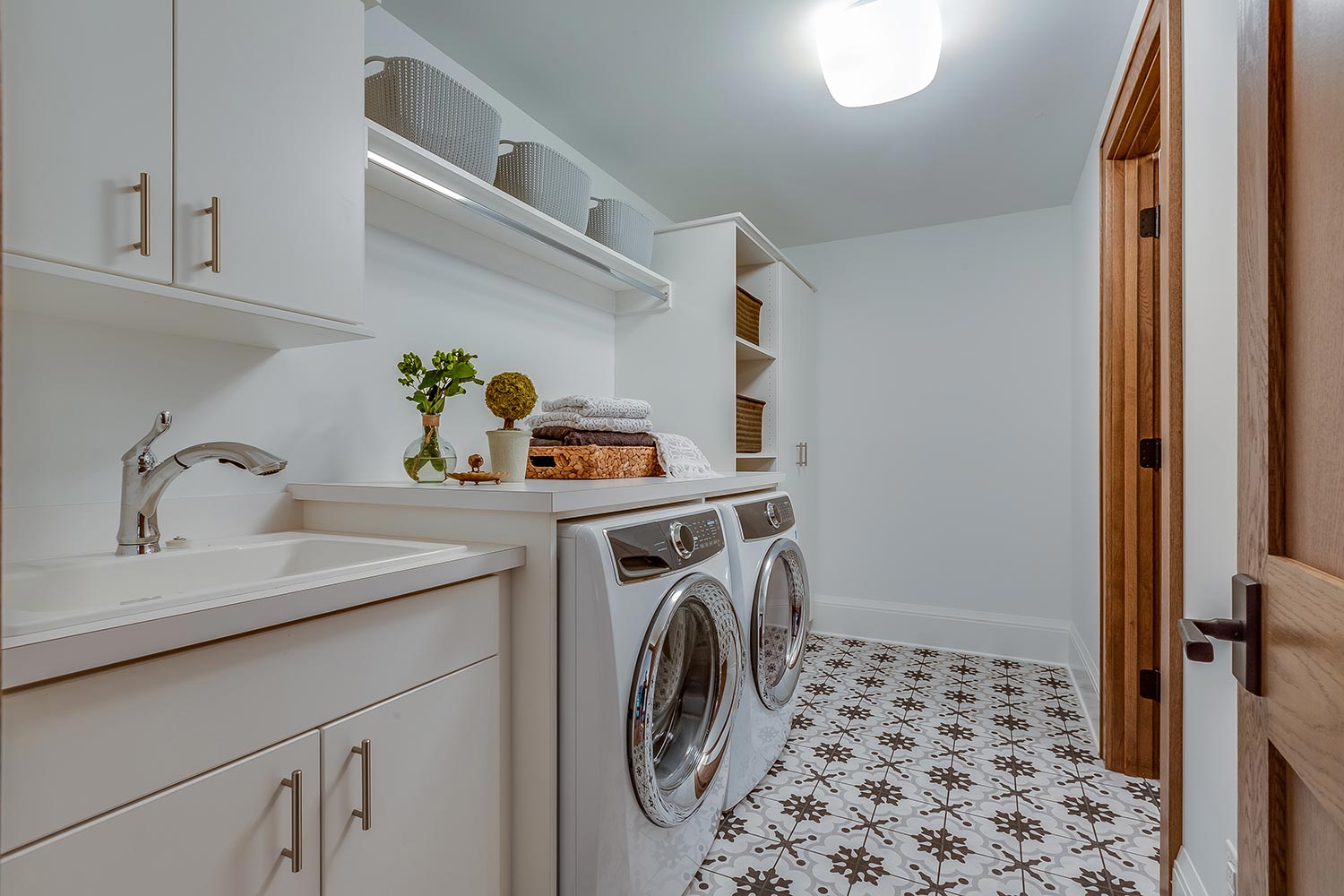Have you recently purchased a DeLonghi portable air conditioner and you're wondering how to install it? Wonder no more, for we have researched this question and have the most detailed answer for you right here.
Here are the simple steps to install a DeLonghi portable air conditioner in a room with a single hung window:
- Remove the portable AC from the box.
- Position it close to the window where you will install the exhaust. Make sure that there is a power outlet nearby.
- Open the single hung window where you will install the exhaust.
- Extend the bracket horizontally to cover the width of the single hung window.
- Secure the bracket at the chosen length using a pin or screw.
- Close the window and let it rest snugly on top of the bracket.
- Connect the hose to the back of your portable air conditioner.
- Extend the hose to reach the bracket on the window and install it there.
- Close all other windows in the room. Close the curtains if it is daytime.
- Plug the portable air conditioner in and turn it on.
- Set to the desired temperature.
The steps above are for single hung windows. We will talk about installing the DeLonghi portable air conditioner on a sliding window and on a casement window in the sections below. Read on!

How to install a DeLonghi portable air conditioner?
The steps for installing a DeLonghi portable air conditioner above can also be applied to a double-hung window. Simply install the bracket on top or bottom of a double-hung window, and don’t forget to close the other window before turning your air conditioner on.
However, it is best to install the exhaust of your portable AC on the bottom opening of a double-hung window. This is to ensure that the exhaust hose will be long enough to reach the opening.
How to install a DeLonghi portable air conditioner on a sliding window?

The opening mechanism of a sliding window is similar to a single hung window with the direction of the opening, as the only difference.
Follow the first three steps of the guide we provided earlier, then continue with the steps below:
- Extend the bracket vertically with the opening at the bottom. It should cover the height of your sliding window.
- Secure the extended bracket with the provided screw or a pin.
- Make sure that there are no gaps on top of the bracket after extending it. If the length of the bracket is not enough to cover the height of the sliding window, measure the length and width of the gap.
- Trim a piece of rigid foam board and place it between the window frame and the bracket to seal the gap.
Follow the rest of the steps in the guide above to complete the installation of your DeLonghi portable air conditioner.
How to install a DeLonghi portable air conditioner on a casement window?

A DeLonghi AC unit comes with a bracket that can be used to install the exhaust on a single or double-hung window. When installing the exhaust on a casement window, DeLonghi only advises pointing the exhaust hose outside the casement window.
However, this will create a large gap on the open casement window where heat can pass through freely. Unfortunately, the DeLonghi portable air conditioner doesn’t come with any bracket for casement windows.
It is a good thing that this is something that can be done as a DIY project if you’re handy with working with aluminum or from any window repair shop. The steps below are for taking the measurements to a window repair shop for them to create the exhaust frame for you.
How to make a DeLonghi portable air conditioner exhaust frame for casement windows?
The steps below can also be used if you want to install your portable air conditioner on a double casement, hopper, or awning window. It can even be used on a jalousie window. Make the frame thick enough so that it will not interfere with the movement of the jalousie.
Here are the quick steps to create an exhaust frame:
- Measure the frame of the casement window. If you have a double casement window, just measure one side—the side where you’ll install the exhaust frame. If your window has a screen frame, use that frame as a template for the exhaust frame.
- Bring your measurements to a window repair shop and have them make a frame that has the measurements that you took. If they have a polycarbonate glass (or plexiglass, although we’re biased towards polycarbonate because they are tougher than plexiglass) that can go with your frame, have them mount that on your frame.
- Use the provided bracket of the DeLonghi AC unit as a template. Mark where you’d like the exhaust hole to be and trace the hole from the bracket on the polycarbonate surface.
- Cut the hole out that matches the hole on the bracket. This is where polycarbonate turns out to be the superior material, although it is more expensive than plexiglass.
- Attach screen locks if your window has a frame for attaching a screen. The reason why it is a good idea to use the screen frame as a template including the thickness is to make it easier to install the exhaust frame. Just install it like a screen frame. However, if you do not have a screen frame, you can screw the exhaust frame on the window frame.
- Install the portable air conditioner on the new exhaust frame.

The BuyPlastic clear polycarbonate plastic sheet is available on Amazon. Check it through this link.
How to maintain a DeLonghi portable air conditioner?
Now that you have all the different steps for installing a DeLonghi portable air conditioner, you can install it on any window type, except for a pivoted or a center pivot window.
After you’ve completed the installation task, the next thing to do would be to learn how to properly maintain your DeLonghi portable air conditioner so that you can enjoy years of service from it.
Venting holes
When positioning your portable AC, make sure that none of the holes or the intake and outlet grills on it are covered or blocked. Do not place it too close to the wall, especially if there are curtains nearby. Your AC cools the room and dehumidifies it by taking in warm air through these grills.
Do not insert any small objects into the grills because this can block or damage the filter membranes inside. A damaged filter membrane will no longer be able to keep out debris, dirt, and dust that can damage the air conditioner.
Air filters
The air filter ensures that the air going into your AC is clean and as dust-free as possible. This should be cleaned every end of the week that you’ve used it, as recommended by DeLonghi.
To clean the air filter, simply use a vacuum cleaner to suck out the dust particles from it. Alternatively, you can use compressed air to clean it over a garbage can.
If the air filter has become very dirty, submerge it in lukewarm water. Submerging will loosen the accumulated dust on the air filter. Rinse it several times after submerging it, and then let it dry naturally.
Make sure you clean all the air filters on your DeLonghi portable air conditioner. Some models have two or more air filters that are located at the back or sides.
Draining water
All air conditioners produce water as a byproduct of cooling the air and normalizing the humidity in a room. Thus, it is important to drain the water from your air conditioner at the end of the season.
If you live in a very humid area, you might need to drain your AC more often. Most models will warn you if the water tray is almost full. Do not ignore this. Ignoring it can cause water to spill from your DeLonghi portable air conditioner.
Additionally, if the water tray is full, the water produced by your air conditioner could get somewhere else and get some internal components wet.
Your DeLonghi portable air conditioner comes with a drain hole at the bottom right or left. Follow the simple steps below to drain the water:
- Locate the water drain valve at the bottom of your DeLonghi portable air conditioner.
- Place a tray or bowl under the air conditioner to catch the excess water.
- Open the screw lid and pull out the rubber stopper. Put these two aside to reinstall them later.
- Wait until you’ve drained all the water into the tray or bowl.
- Seal the drain valve once more with the rubber stopper. Close the drain valve with the screw cap.
- Dispose of the water that you’ve drained.
Where not to use a portable AC

The advantage of using a portable air conditioner is that you can bring it to any room where you need instant cooling. However, there are areas in your house where you should not use it. Do not use your AC in any room that has a high amount of moisture, like the laundry room, shower, or kitchen.
Conclusion
The installation of the DeLonghi portable air conditioner is straightforward if installed on a horizontal sliding window or on a single/double-hung window. Installing it on a casement window is a real challenge because of the way the window opens. This is where a custom-made exhaust frame becomes necessary.
If you liked this article, why not check out the articles below:
How Long Does A Portable Air Conditioner Take To Cool A Room?

